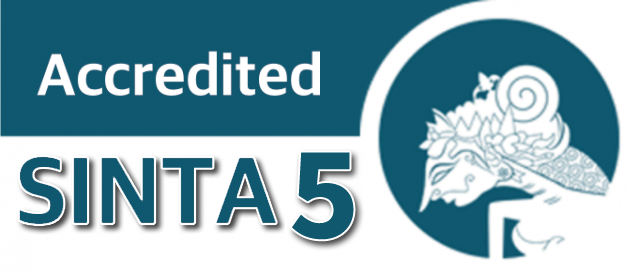PENGARUH TERAPI AURASOMA TERHADAP KECEMASAN KELUARGA PASIEN DI UNIT GAWAT DARURAT RUMAH SAKIT UMUM SUNDARI MEDAN
Abstract
patients experiencing critical situations but also induce anxiety in the accompanying family members. One type of therapy believed to reduce the level of anxiety in family members is Aurasoma therapy. The aim of this research is to determine the influence of Aurasoma therapy on the anxiety levels of family members of patients. This study follows a Pre-Experimental design with a one-group pretest- posttest approach. The research was conducted in the Emergency Unit of Sundari Medan General Hospital. The study's population consisted of 150 individuals, with 32 selected as samples through purposive sampling. Data analysis was carried out univariately and bivariately using the paired sample t-test at a 95% confidence level (α=0.05).The research results indicate that the anxiety levels of family members before Aurasoma therapy, descriptively expressed in the average anxiety score, were 52.00±10.302, while after Aurasoma therapy, the average anxiety score was 35.38±4.233. Aurasoma therapy significantly influenced the reduction of anxiety in family members of patients in the Emergency Unit of Sundari Medan General Hospital, with a p-value of 0.000 < 0.05.It is recommended for medical personnel in the Emergency Unit of Sundari Medan General Hospital to educate and provide understanding to the family members of patients in the emergency department, enabling them to manage their anxiety using Aurasoma therapy as one of the techniques to reduce anxiety.
References
Azwar, S. (2018). Penyusunan Skala Psikologi. Yogyakarta: Pustaka Belajar.
Fauzy, A., Nisa, B., Napitupulu, D., & Abdillah, F. (2022). Metodologi Penelitian (Cetakan Pertama). Jakarta: Pena Persada.
Hadiansyah, T., Pragholapati, A., & Aprianto, D. P. (2019). Gambaran Stres Kerja Perawat Yang Bekerja di Unit Gawat Darurat, 7(2), 50–58.
Halik, A., & Karim, H. A. (2022). Chromotherapy Pencegahan Gangguan Psikologis Melalui Terapi Warna (Cetakan Pertama). Jakarta: CV. Literasi Nusantara Abadi.
Hamarno, R. (2018). Keperawatan Kegawatdaruratan & Manajemen Bencana. Modul Bahan Ajar Kebidanan. Pusat Pendidikan Sumber Daya Manusia Kesehatan. Jakarta: Kementrian Kesehatan Republik Indonesia.
Hartati, S., & Halimuddin. (2017). Response Time Perawat Di Ruang Instalasi Gawat Darurat. jurnal Ilmiah Mahasiswa Fakultas Keperawatan, 2(3).
Hussein, M. A. (2021). Keajaiban Terapi Warna Biru (Cetakan Kedua). Sukabumi: Adamssein Medika.
Imardiani, Hikmatuttoyyibah, A., & Majid, Y. A. (2020). Pengaruh Terapi Aurasoma Terhadap Kecemasan Keluarga Pasien di Ruang Intensive Care Unit, (1).
Kahfi, A. Y. (2021). Teori Warna (Cetakan I). Jakarta.
Karo, M., Simorangkir, L., Daryanti Saragih, I., Suarilah, I., & Tzeng, H. M. (2024). Effects of mindfulness‐based interventions on reducing psychological distress among nurses: A systematic review and meta‐analysis of randomized controlled trials. Journal of Nursing Scholarship, 56(2), 319-330.
Kaplan, H. I., Sadock, B. J., & Grebb, J. A. (2018). Sinopsis Psikiatri Jilid 2.Jakarta: Binarupa Aksara.
Kemenkes RI. (2020). Profil Kesehatan Indonesia 2019. Jakarta: Kementerian Kesehatan Republik Indonesia.
Kepmenkes RI. (2020). Panduan Teknis Pelayanan Rumah Sakit Pada Masa Adaptasi Baru. Jakarta: Kementerian Kesehatan Republik Indonesia.
Kingston, D. (2019). Tindakan Gawat Darurat (Edisi 2). Jakarta: Penerbit Buku Kedokteran EGC.
Krisanty, P. (2019). Asuhan Keperawatan Gawat Darurat. Jakarta: Trans Info Media.
Mariati. (2022). Gambaran Tingkat Kecemasan Keluarga Pasien Yang Di Rawat Di ICU Rumah Sakit Mardi Rahayu Kudus. Journal of TSCSI Kep, 7(1)
Saragih, I. S., Simorangkir, L., Siallagan, A., & Saragih, I. D. (2022). Tingkat Kecemasan dan Analisis Faktor-Faktor yang Mempengaruhi Kecemasan Pasien Covid-19. Jurnal Keperawatan Jiwa, 10(2), 363-374.
Simorangkir, L., Ginting, A., Ginting, A. A. Y., Sitepu, A., Saragih, H., Ginting, N., ... & Perangin-angin, M. (2022). The Relationship of Parents' Emotional Intelligence with Child Abuse Events in Children Aged 6-12 Years During the Pandemic of Covid-19. HIV Nursing, 22(2), 674-677.












